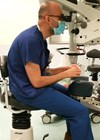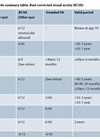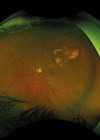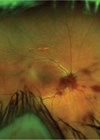Trainees
Watch your back: Ergonomics and Ophthalmology
Aadil Hussain discusses an ophthalmologist’s risk of musculoskeletal injury and highlights the importance of ergonomics education, to ensure a pain-free career. Chronic and disabling musculoskeletal injury has been identified in the field of ophthalmology with increasing prevalence. The ophthalmologist is...
How good does my vision have to be to drive this thing? Visual standards for various occupations
We can all picture that moment in clinic: you are about to tell someone that they’re no longer legally able to drive, ready to deploy our ‘breaking bad news’ techniques. For some patients this may have been expected, or they...
A case of congenital lacrimal fistula: an overview of diagnosis and management
Shivam Goyal and Kyaw Htun Aye describe the challenges of dealing with a rare case of congenitial lacrimal fistula.We present a case of a 19-month-old baby with a congenital abnormality. Congenital lacrimal fistulae are a spot diagnosis due to its...
How to pass the FRCOphth part 2 oral exam
If you have got this far in terms of your exams, relax. In terms of pass rate, the hardest FRCOphth membership exams are already behind you. The pass mark for the part 2 oral exam is around 75%, and about...
Ocular bubbly: a vitreoretinal update on the art of gases
The authors remind us of the revolutionary impact gases have had on retinal surgery. In 1938, Rosengren attempted to improve his retina repair surgical outcomes [1]. He discovered that suturing the retina or pressing externally on the sclera were not...
Sclerochoroidal calcification masquerading as ocular malignancy
Case 1 A 68-year-old Caucasian gentleman was urgently referred to eye casualty by his optometrist after seeing an unusual incidental finding of protruding lesions from the retina, suspecting choroidal melanoma. He was asymptomatic and this was his first eye test...
Orbital cellulitis - an overview of the diagnosis and management
Periorbital (preseptal) and orbital cellulitis are infections of the subcutaneous tissues of the eye. They are differentiated by the location of the infection. Periorbital cellulitis refers to infection of the eyelid and subcutaneous tissues anterior to the orbital septum, whereas...
How to pass the FRCOphth part 2 written
The part 2 written exam comprises of 180 multiple choice questions – spread over two 120-minute sessions. According to the most recent college exam reports, the pass rate ranged from 45 to 70% in 2019/2020. Most trainees seem to sit...
Innovation update: key advances in eyecare transformation in the last year
Vishal Shah and his co-authors reflect on examples of innovation in eyecare delivery published in the last year and the implications for the future of eyecare services. The “new normal” is an overused phrase to describe extraordinary measures that have...
The power of the full blood count
Vishal Shah walks us through his thought process whilst highlighting the importance of routine investigations when dealing with unusual retinovascular presentations. Retinal changes can arise in anaemia, leukaemia, lymphoma, myeloproliferative and myelodysplastic syndrome. They are often the first manifestation of...
Ophthalmology specialty training applications: a costly affair?
Ophthalmology is one of the most competitive specialties to pursue training in worldwide. In the United Kingdom, the ST1 entry national selection competition ratio for the past few years has ranged between four to five applicants per post [1]. The...
The Duke-Elder exam: A medical student’s head start into ophthalmology
The Duke-Elder exam is a specialist ophthalmology exam intended for medical students to sit during medical school. It is named after Sir Stewart Duke-Elder, a pioneering Scottish ophthalmologist who was active in the first half of the 20th Century by...















